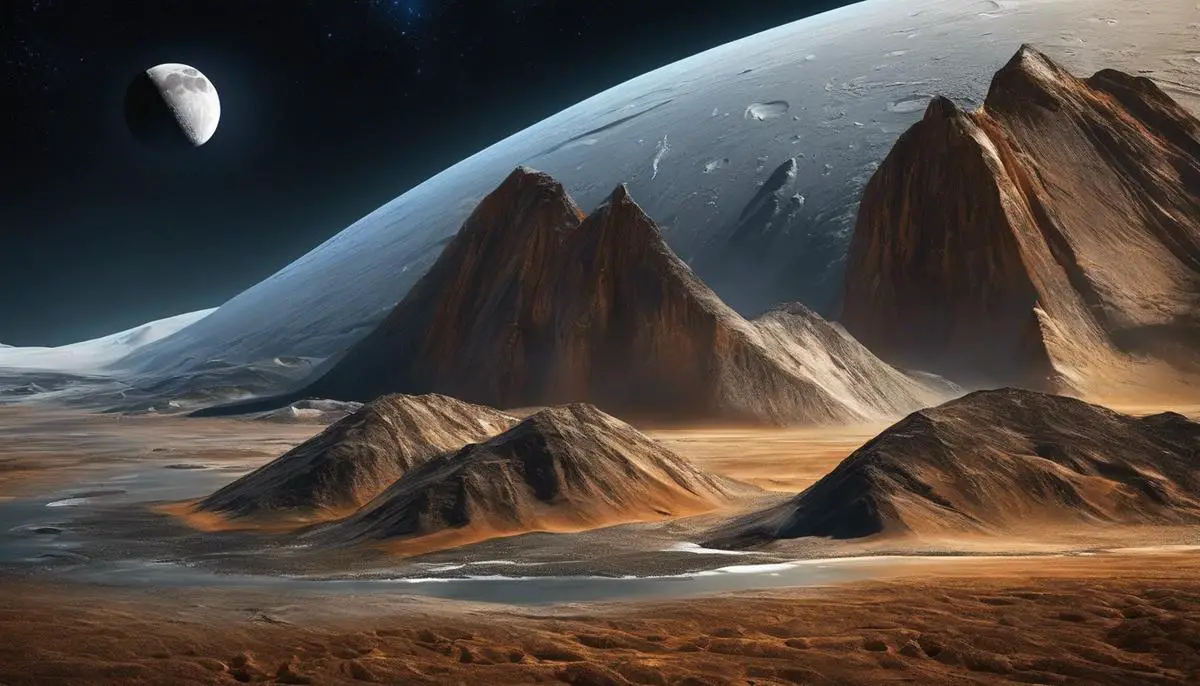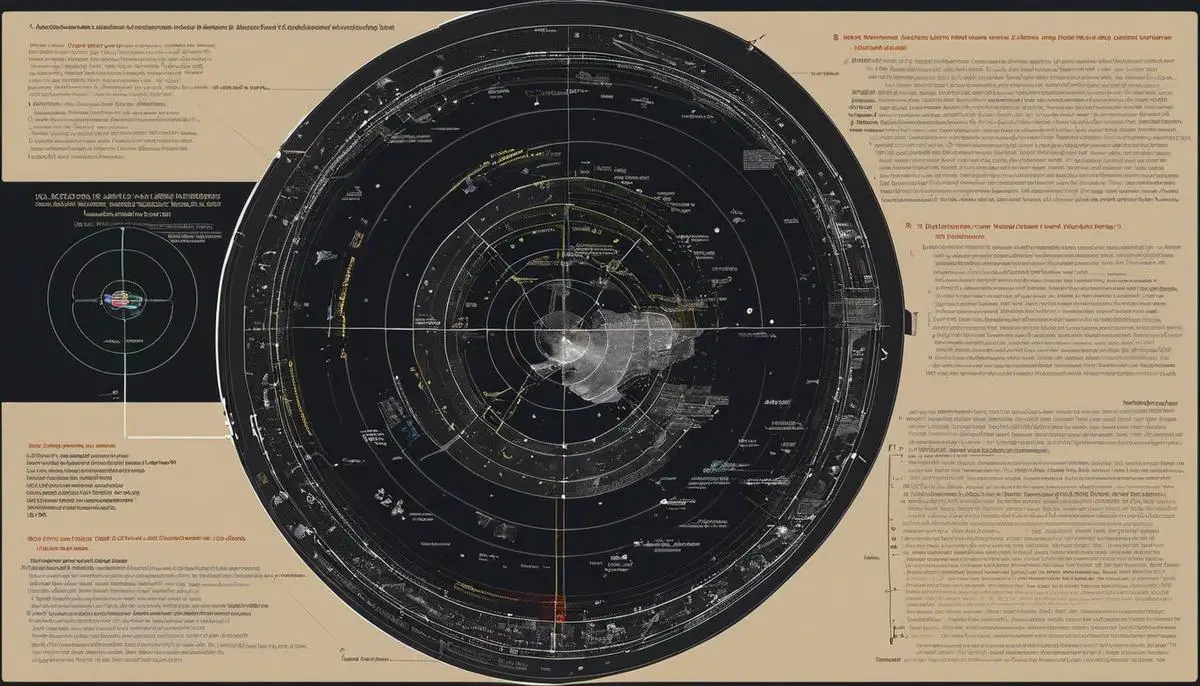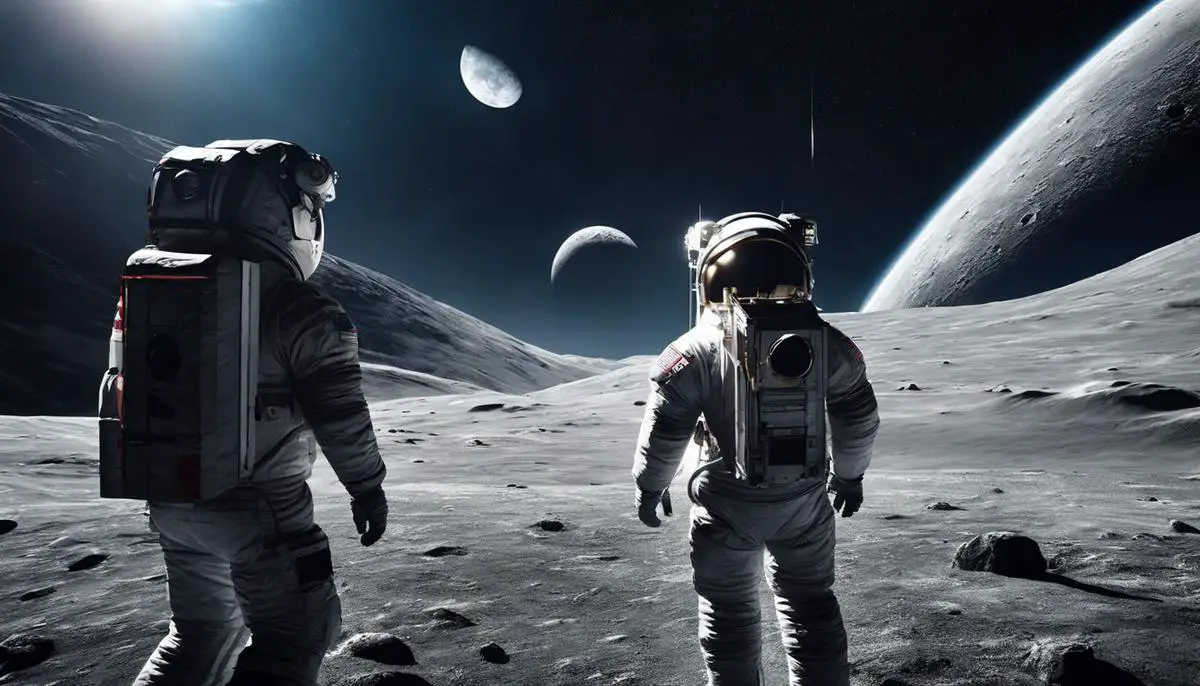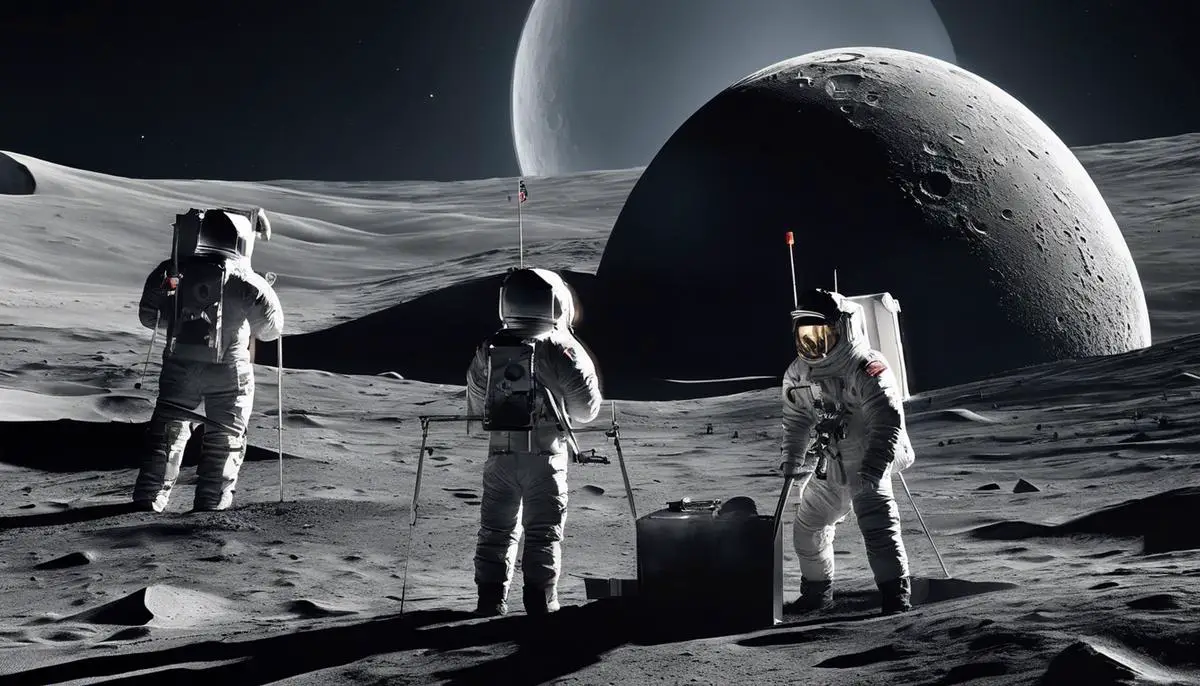The vibrant anticipation surrounding the Artemis III mission has sparked a multitude of fascinating considerations, chief among them being the selection of a suitable landing site on the Moon. While reaching the moon remains a significant technological triumph in its own right, the choice of landing site inherits an added layer of complexity due to it being a crucial determinant of the mission’s scientific outcome, hardware compatibility and long-term human lunar presence. This enlightening discourse aims to create a profound understanding of these variables by delving into the scientific criteria for selecting a site, exploring potential lunar sites based on these standards, assessing the interplay between Artemis III’s hardware requirements and site compatibility, and reflecting on the astrobiological and historical significance inherent to these landing sites.
Contents
Scientific Criteria for Artemis III Landing Sites
As we contemplate the ambitious endeavor ahead of us, namely the Artemis III mission’s bid to return humans to the Moon, it is vital to acknowledge the importance of one essential decision – the selection of the landing site. The implications of this decision are manifold, from ensuring the safety of the astronauts to determining the scientific potential of the site. In fact, two primary considerations take precedence in this selection: scientific merit and logistical considerations.
Firstly, the landing site should possess a high scientific potential. The Moon, our nearest neighbor in the astronomical context, offers a record of the earliest stages of our solar system. By understanding and studying this record, considerable insight into the history of our own planet can be gained. It is, therefore, crucial to select a site that offers diverse geological features, from impact craters to volcanic deposits.
Additionally, areas with a possibility of water ice deposits are of particular interest. The Moon’s polar region, particularly the South Pole, is a promising candidate in this regard. Investigating the water on the Moon can provide revolutionary insights into lunar history. Moreover, this might carry profound implications for future space exploration, as water is a valuable resource – not just for human consumption, but potentially as a source of oxygen or even as rocket fuel.
The second major consideration is the logistical feasibility of the site. Undeniably, astronaut safety is paramount, making it essential to select a locus that is as benign as possible. A site with relatively flat terrain, minimal slope, and lack of large boulders is deemed to be preferable. Similarly, the ease of spacecraft navigation to the location is pivotal. Aspects such as lighting conditions and communication with Earth come into play in this regard.
Of note, the sunlight at polar regions exhibits a unique low-angle characteristic, which can possibly create shadows that hinder the astronauts’ vision. Thus, detailed analyses of illumination conditions, using lunar reconnaissance data, become integral to the decision-making process.
Furthermore, the logistical convenience extends to future missions as well. For example, a location in close proximity to the planned Lunar Gateway, an upcoming space station around the Moon, could massively amplify the efficiency and sustainability of long-duration lunar exploration.
In summation, the choice of the landing site for the Artemis III mission is a delicate balance between scientific potential and logistical feasibility. By making an informed, judicious choice, not only can we pave the way for a successful mission but also add an edifying chapter to humanity’s understanding of our celestial neighbor. The development in this perspective is dynamic, and as we inch closer to the mission, each analytical step taken contributes a vital piece to this complex but intriguing puzzle.

Exploring Potential Lunar Sites
Exploration of lunar locations for optimal Artemis III landing sites brings into focus the ensemble of Mars-like landscapes, hydrated landforms, pyroclastic deposits, and intriguing polar regions. These are predominant lunar locales currently at the centerstage of NASA’s Artemis III’s locus focus.
One significant contender, termed the “Hadley-Apennine region,” embodies a profound blend of geographical complexity and scientific importance. The area, located in the vicinity of the Apollo 15 landing site, brings together a riveting cocktail of topographic diversity. High mountain ranges, deep rilles formed by ancient lava activity, and an expanse of relatively flat lunar maria are pivotal terrains primed for exploration. Moreover, studying the basalts in this region could bequeath more profound insights into the moon’s volcanic history and the environmental conditions under which these formations were birthed.
Another candidate warrants attention due to its historical connection – the South Pole-Aitken basin, the largest known impact crater on the lunar canvas and, indeed, the solar system. Artemis III venture here could be a veritable goldmine of geological data, carrying the potential to unravel the enigmatic history of lunar impact events. This basin also nests an intriguing topological feature – the “Peak Ring” structure, which could hold profound information about the events following the moon’s violent past.
Equally significant is a landing near the permanently shadowed regions (PSRs) found in the moon’s polar areas, primarily under topic due to their water ice deposits. If water ice could be accessed and processed into liquid water, it might present a viable utility for astronauts, serving as drinking water, oxygen supply, or fuel for lunar rockets. The lunar South Pole, in particular, seems a promising target, teeming with water-ice-rich PSRs and exposed to near-constant sunlight, ideal for a lunar habitat and solar power generation.
Admittedly, landing in any of these locations is not without its challenges. Terrains are treacherous, with unpredictability entwined in the shadows and craters that stipple the moonscape. Still, navigating these hurdles is the thrilling side of pioneering our celestial neighbor.
Choosing a lunar landing site is a dance choreographed by the tension between scientific yield, resource utilization, and safety. As Artemis III navigates this delicate balance, it undeniably marches closer to scripting yet another significant chapter in the annals of space exploration. The selection process may be arduous, but the rewards – transformative in our quest to crack open new chapters of lunar study, human exploration, and cosmic understanding.

Artemis III Hardware Requirements & Site Compatibility
Amidst intense deliberation on landing sites for Artemis III, understanding the technical specifications of space hardware comes into focus. As our technological landscapes continually evolve, the hardware capabilities currently at our disposal can notionally stretch to facilitate landing just about anywhere. Yet, there is an intricate matrix of factors that link the capabilities of Artemis III to an ideal landing site.
Artemis III will use the Orion spacecraft – a versatile spacecraft designed for a comprehensive suite of space missions. It’s outfitted with advanced navigation, propulsion, life support, and communication systems. An essential component in deciding on a landing site is the range of the Orion European Service Module (ESM) propulsion system. Its capability to manage trajectory alterations plays a pivotal role in selecting a site within its operational boundaries.
The lunar terrain beneath Artemis III’s descent engine practically glows, with the effects being most pronounced on fine and dense regolith. This lunar soil, once uplifted, has the potential to be a hazard. It could impair the vision of the astronauts during landing or even damage the spacecraft. Therefore, the characteristics of lunar soil at the prospective site have profound implications on the selection process.
Exploration EVA suits—extravehicular activity suits—will be worn by Artemis III astronauts. The EVA suits are designed to combat the rigors of the lunar environment. They are equipped with life support systems and offer robust protection against temperature extremes, micrometeorite impacts, and lunar dust. These suits, however, have limitations in traversing extreme terrains. Therefore, the nature of the terrain, the angles of slope, and the spatial distribution of hazards such as boulders and craters are vital pieces in the complex puzzle of site selection.
The Artemis III also comprises a lunar ascent module – the apparatus designed to launch astronauts from the Moon’s surface back to the Gateway. This requires accurate understanding of gravitational anomalies on the Moon and how they will interact with and possibly affect the launch of the ascent module. Therefore, the potential site must have gravitational attributes that are compatible with the ascent module’s flight requisites.
Lastly, the Artemis III mission will also employ various rovers for surface explorations. The rovers are designed for scientific explorations and to assess available resources on the lunar surface. The operational limitations of these rovers vis-à-vis slopes, lunar rocks, and dusty terrains closely impinges on the choice of the landing site. Furthermore, the scientific instruments onboard these rovers may have specific landing site requirements to maximize their scientific yield.
In conclusion, while Artemis III harbors cutting-edge technologies, these technologies are not without constraints. The ultimate choice of the landing site for Artemis III is bound by an intertwined interplay of the scientific objectives of the mission, the technical constraints of the hardware, and the general terrain attributes of the potential landing sites. Looking forward, the intricate choices of today’s missions also serve to pave the way for future endeavors, transforming the realm of the possible into the domain of the probable.

Astrobiological & Historical Significance of Landing Sites

Future Implications & Human Lunar Presence
One of the significant aspects of the Artemis III mission will be the establishment of a sustained human presence on the lunar surface. The choice of landing site, therefore, will influence not just the scientific advancements achieved by the mission but also the success of future lunar initiatives.
A sustained human presence on the moon necessitates the finding and utilization of lunar resources. The presence of water ice in permanently shadowed regions (PSRs) could provide a vital resource for astronaut survival and rocket propellant, enhancing the longevity of lunar missions. However, PSRs present challenging terrain due to extreme low temperatures and lack of sunlight making navigation difficult, hence the need for a tactful balance in site selection.
The onset of the Artemis III mission will also encompass astrobiological studies, focusing on the search for extant or extinct extraterrestrial life and understanding the origins and future of life in the universe. The choice of landing site will therefore strive to embrace locations rich in geological diversity, potentially harboring biosignatures and providing insights into cosmic history.
Lunar pits and subterranean cave systems are prime candidates for astrobiological studies, offering protection from meteorite impact, solar radiation and lunar temperature extremes, conditions that potentially replicate those found in Martian subsurface landscapes. These sites could be the key to unraveling the mysteries of life beyond earth.
Historic sites like the Apollo landing sites, particularly untouched areas, also present an invaluable opportunity to further our understanding of the moon. Revisiting these sites, such as the Surveyor 3 lunar module, may provide unique data rendering a differential perspective on lunar science. However, these locations require responsible exploration to avoid disturbing the historical artifacts while exploiting the scientific potential effectively.
Chaplygin, an other crater of interest, may harbor volatile deposits which could be employed for life support or refueling rocket propellants. Nonetheless, the crater’s complex terrain requires meticulous considerations, ensuring astronaut safety without compromising scientific advancement.
In conclusion, the landing site for the Artemis III mission will be the cornerstone determining the fruitfulness of the mission and future lunar initiatives. Striking a balance between science – space history and safety will be a critical mandate. As Artemis III ushers in a new era of space exploration, the decision to select the optimal landing site is a testament to humanity’s decision-making prowess in space exploration – a venture that bodes well for future missions to Mars and beyond.

The navigation of lunar landing site selection is a compelling venture, intertwining science, technology, heritage, and an unprecedented vision for a sustainable human lunar presence. The potential landing sites for Artemis III not only hold secrets about the universe blackened out by Earth’s magnetic fields, but they may also provide a blueprint for pioneering an enduring human footprint on the Moon. By selecting a landing site that optimizes scientific discovery, hardware proficiency, and heritage and astrobiological interest, the Artemis III mission stands to transform space exploration profoundly. Contemplating this monumental endeavor sends ripples of excitement through the scientific community and beyond, as we stand on the brink of forever altering our relationship with the cosmos.
